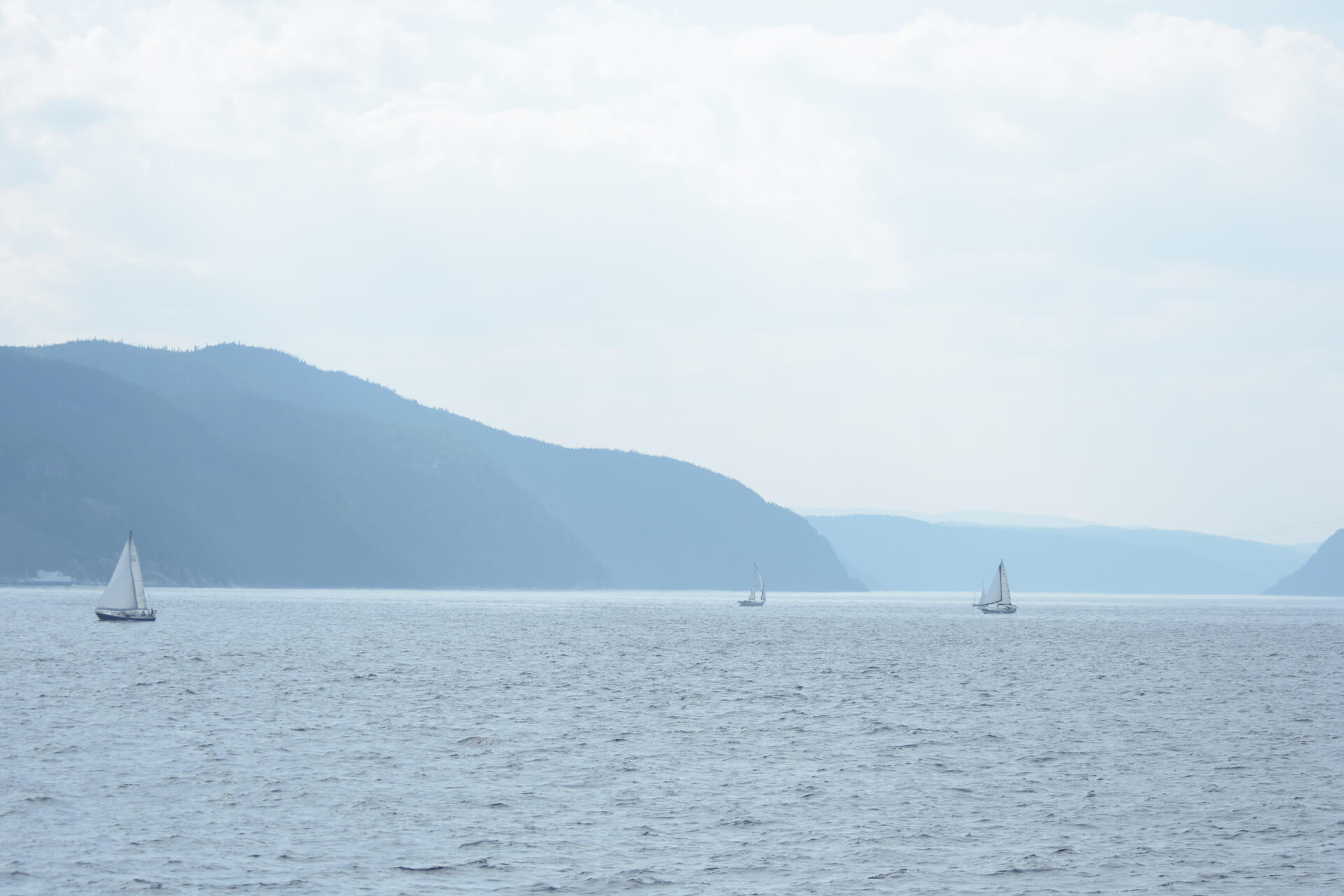Gulf, Estuary or River?
The St. Lawrence River is divided into three sectors: the fluvial sector, the estuary and the Gulf. They are distinguished by their depth, salinity and currents. They therefore shelter different aquatic fauna and flora.
The Fluvial sector is the shortest and the shallowest of the three sectors. The water is fresh and the tides are absent. Normally, no marine mammals should be found in these waters.
The Estuary begins at Île d’Orléans, where salt water from the ocean mixes with the fresh water of the river. As the density of salt water is not the same as that of fresh water, two layers of water are created. The water reaches full salinity at the head of the Laurentian Channel, near Tadoussac. The abrupt rise in the Channel’s seabed produces significant upward flows of cool water that mixes with the more temperate surface waters. Driven against the current from the Atlantic toward the Gulf of St. Lawrence, deep salt water is pushed up to the surface by the Gaspé current and the influence of the tides. This phenomenon is called upwelling, and the result is a dazzling array of marine life. The St. Lawrence Estuary is one of the largest and deepest estuaries on the planet. The estuary is home to belugas all year round. In summer, the estuary also hosts rorquals and other species of toothed whales that benefit from the abundance of krill, capelin and other small fish.
The Gulf begins at Pointe-des-Monts, where the river widens into an inland sea that opens out into the Atlantic via the Cabot Strait, (south of the island of Newfoundland) and the Strait of Belle Isle (north of Newfoundland). Whales and seal can be found in the gulf.
| The Saint-Lawrence | Fluvial Sector | Estuary Sector | Gulf Sector |
| Width | 1 to 5 km | 2 à 60 km | over 300 km |
| Depth | 2 to 20 m | over 300 m | approx. 500 m |
| Salinity | Non-saline | Increasingly saline; full salinity start. at Tadoussac | Saline |
| Start | Great Lakes | Ile d’Orléans | Pointe-des-Monts |
| End | Ile d’Orléans | Pointe-des-Monts |
Atlantic Ocean |





